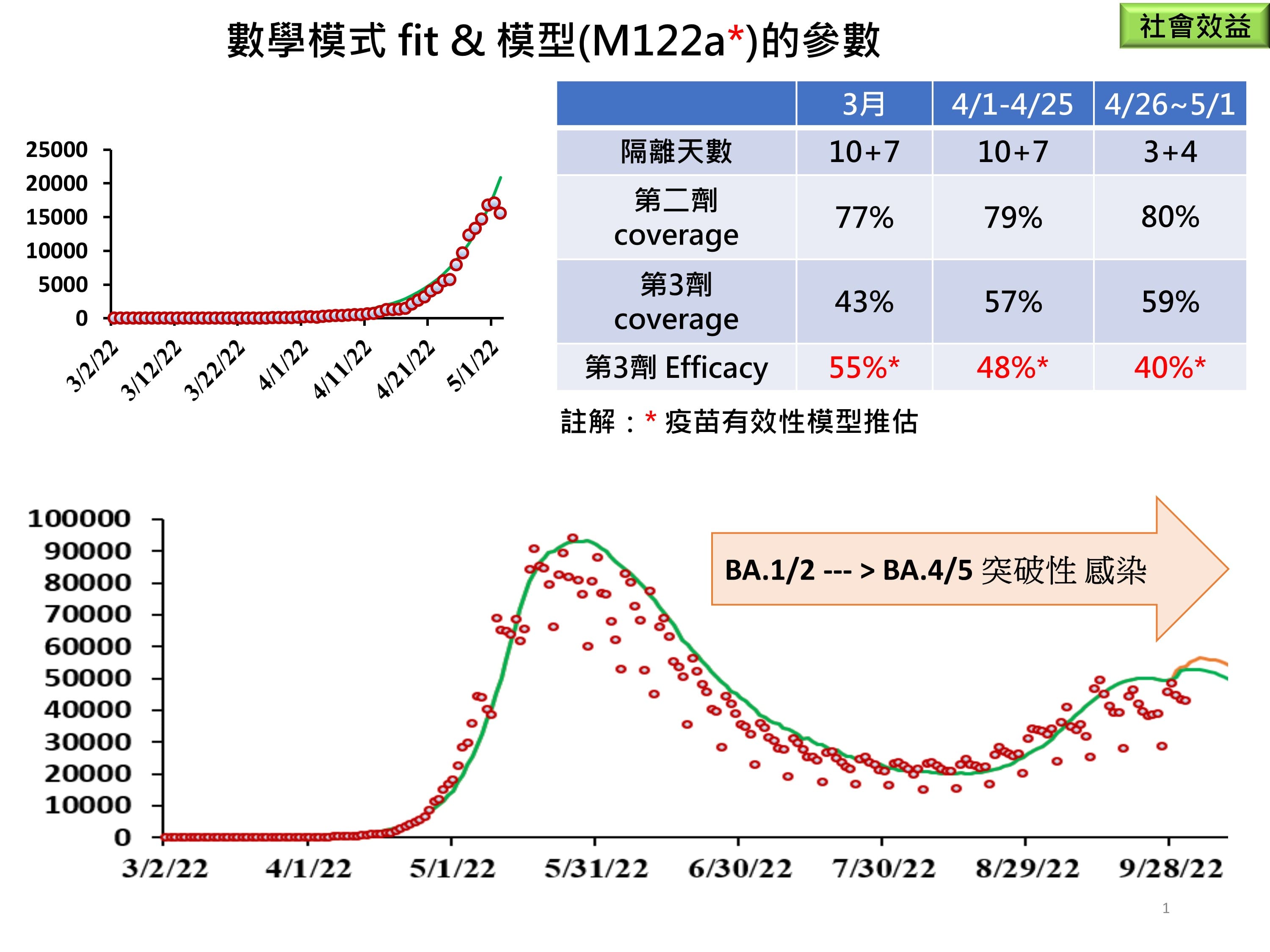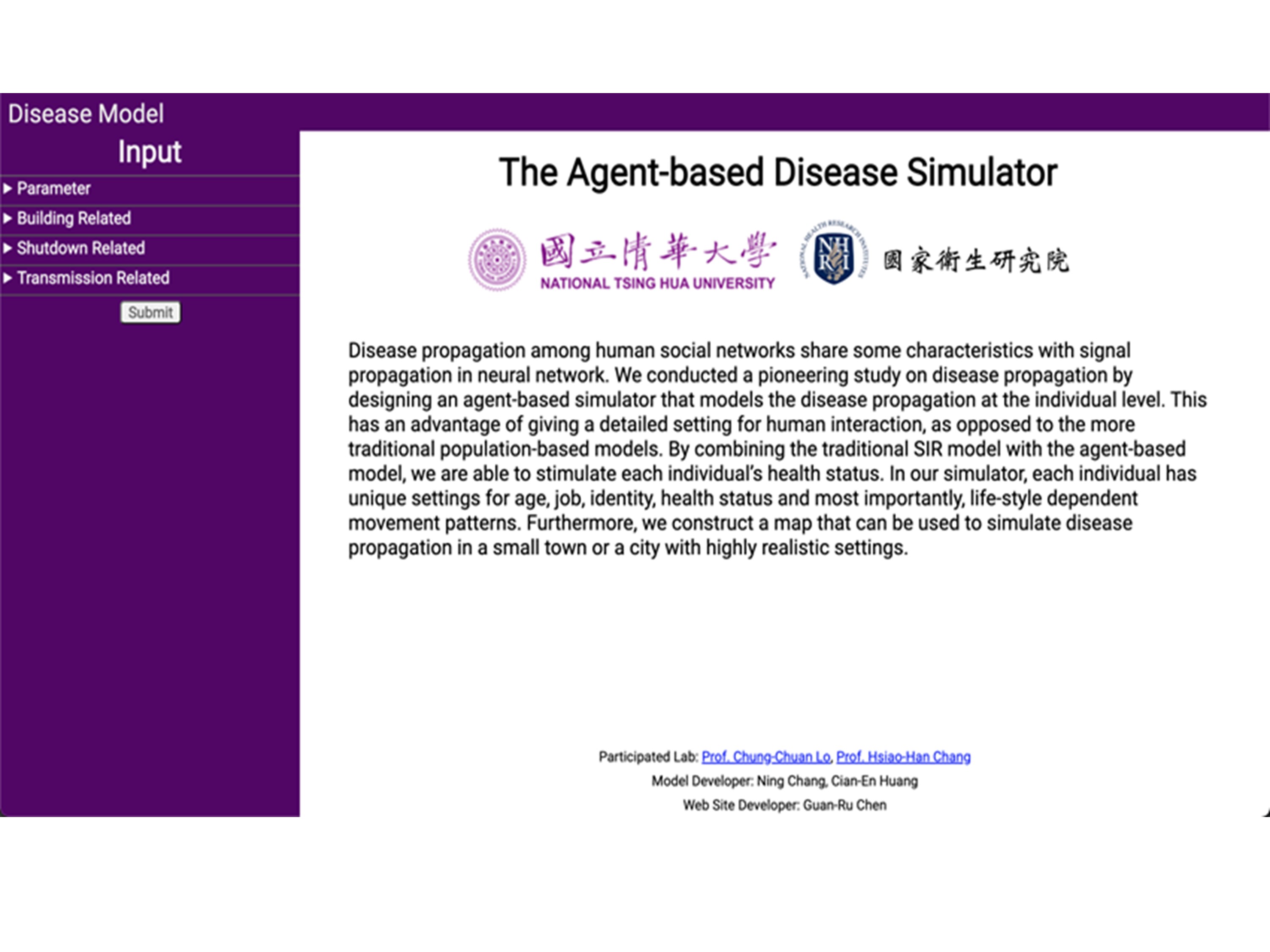| Technical Name | Establishing dynamic models to evaluate the mode of transmission and epidemic prevention measures for COVID-19. | ||
|---|---|---|---|
| Project Operator | National Health Research Institutes | ||
| Project Host | 鄒小蕙 | ||
| Summary | We have developed compartmental disease transmission models to provide policymakers timely simulations of the pandemic's progression. We have also developed an agent-based disease transmission model at an individual level, integrating population mobility data to accurately reproduce the mobility of people in public areas and individuals' activities. We investigated the mediation effects of government non-pharmaceutical interventions (NPIs), on the transmission and containment of the epidemic. |
||
| Scientific Breakthrough | We established empirical distribution of different transmission routes for Omicron strain using a Bayesian approach to estimate transmissions of Omicron. We created a model that replicates the real geospatial environment, and built the mobility model. We utilized a time-delayed path analysis model to present the time effects of causal pathways, offering a more accurate portrayal of the mediating effect of public risk perception through daily activities on the transmission of the epidemic. |
||
| Industrial Applicability | We developed dynamic models to simulate the impact of different quarantine days (such as 10+7, 3+4) and different rapid screening programs for border control and epidemic prevention. We used a realistic model to simulate different levels of transmission, and analyzed how the epidemic and policy implementation affect population mobility. The results on time-delay effect can evaluate the impact of significant epidemics on industries over time. |
||
| Keyword | COVID-19 Dynamic model Screening strategy Disease transmission model Agent-based model Geographic information Epidemic control measures Statistical modeling Risk perception Epidemic analysis | ||
- Contact
- Fang-Jing Lee
- fjlee@nhri.edu.tw
other people also saw







